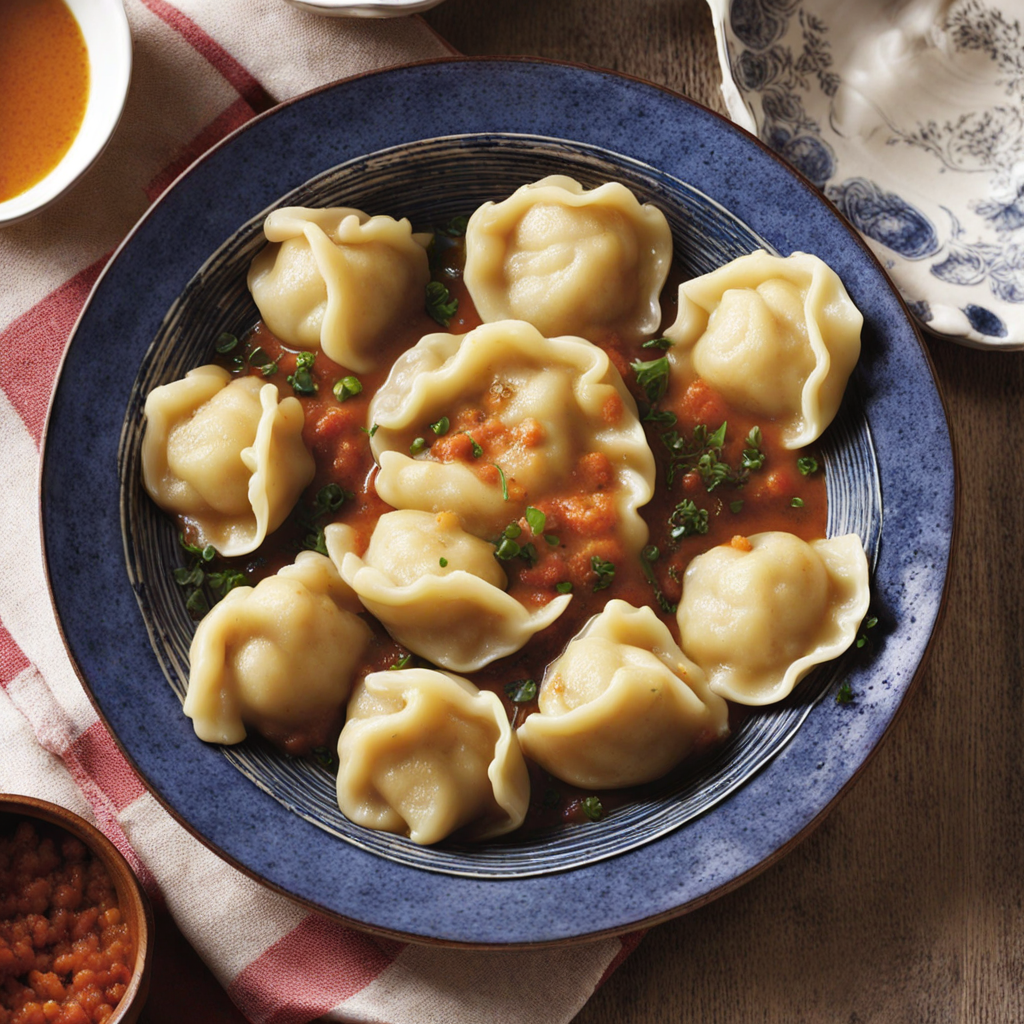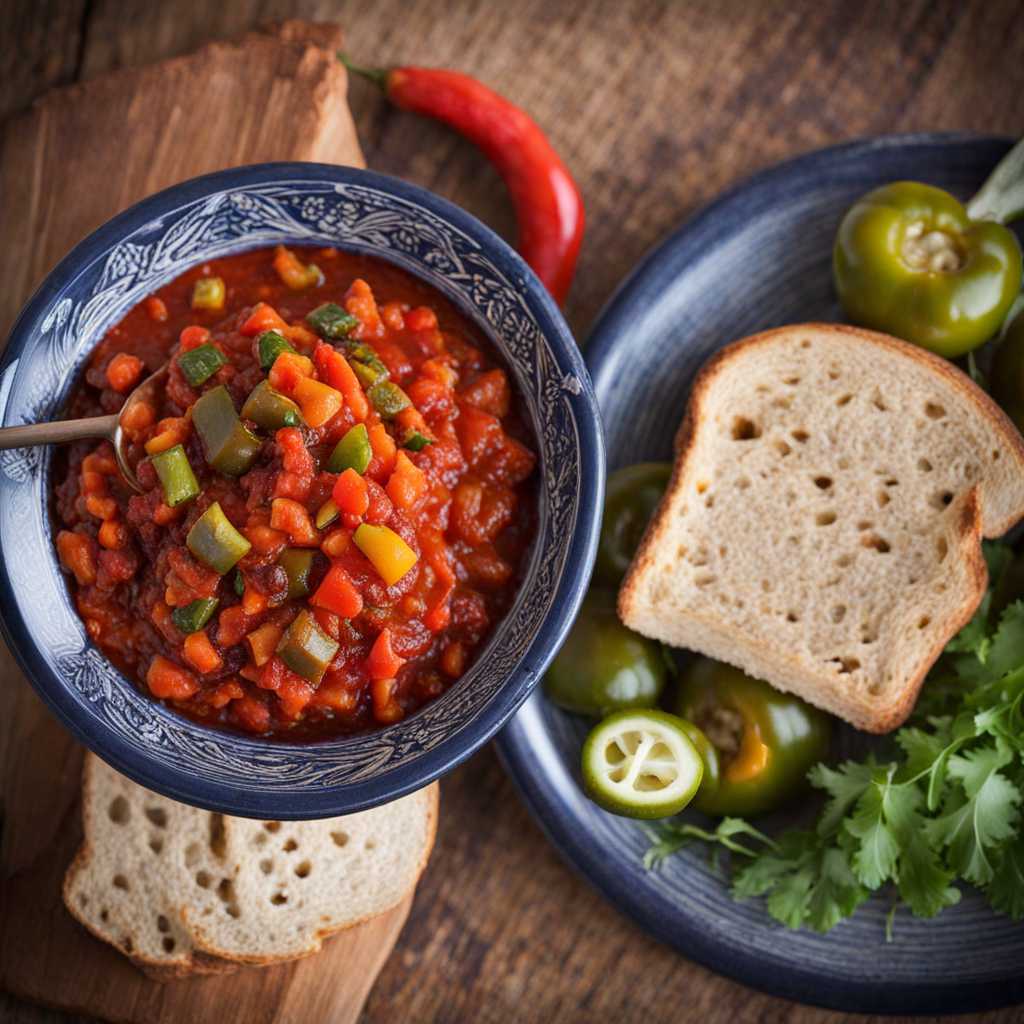Potbrood
Potbrood, a traditional South African bread, is a delightful and rustic dish that showcases the country's rich culinary heritage. This unique bread is typically baked in a cast-iron pot over an open fire or coals, giving it a beautiful crust while retaining a soft, fluffy interior. The name "potbrood" translates to "pot bread," reflecting its method of preparation, which not only infuses the bread with a smoky aroma but also creates a communal cooking experience often enjoyed during gatherings and braais (barbecues). Its flavor is lightly yeasty and slightly sweet, making it an ideal accompaniment to savory dishes or enjoyed on its own with butter. The ingredients for potbrood are simple yet versatile, consisting mainly of flour, water, salt, and yeast. However, many variations include ingredients like buttermilk, herbs, or even cheese to enhance the flavor profile. The dough is usually mixed and left to rise before being shaped and placed in the pot for baking. This method of cooking allows for a delightful contrast between the crispy exterior and the tender, airy crumb inside. As the bread bakes, the aroma wafts through the air, drawing people together to share in the joy of freshly baked bread. Potbrood is traditionally served warm, making it perfect for soaking up hearty stews or enjoyed with a selection of chutneys and spreads. Its rustic nature and the communal spirit of its preparation make it a beloved comfort food in South Africa. Whether you're enjoying it at a festive gathering or as a simple weeknight meal, potbrood offers a warm taste of South African culture that is both satisfying and memorable.
How It Became This Dish
The History of Potbrood: A South African Culinary Tradition Potbrood, a traditional South African bread, has a rich history intertwined with the cultural tapestry of the nation. Known for its unique cooking method and hearty flavor, this bread is not merely a staple food; it embodies a way of life, community, and the resilience of the people who make it. #### Origins and Early Influences The roots of potbrood can be traced back to the indigenous Khoisan people, who inhabited the southern regions of Africa long before European colonization. They utilized the natural resources around them, including wild grains and tubers, to create simple yet nourishing meals. With the arrival of European settlers in the 17th century, particularly the Dutch, the culinary landscape began to shift. The term "potbrood" translates to "pot bread" in Afrikaans, hinting at its method of preparation. Early settlers introduced iron pots to the region, which became essential for cooking over open fires. These pots allowed for the baking of bread in a way that was previously unachievable, utilizing the heat from the coals and embers to create a crusty exterior while keeping the inside soft and fluffy. The process of cooking bread in a pot was practical, especially for those living in rural areas where ovens were not available. #### Cultural Significance Potbrood is deeply rooted in South African culture, transcending ethnic and linguistic boundaries. It is often associated with the Afrikaner community, where it is a favorite accompaniment to boerewors (a traditional sausage) and other meat dishes. However, its popularity extends beyond this demographic, embraced by various groups, including the Xhosa and Zulu peoples, who have made it their own by incorporating local ingredients and flavors. The preparation of potbrood is often communal—a reflection of South Africa’s rich tradition of gathering around food. During social events, such as braais (barbecues), family gatherings, or church functions, potbrood is frequently prepared as a shared dish. This communal aspect fosters a sense of belonging and togetherness, making it more than just a culinary staple but a symbol of community and hospitality. Furthermore, potbrood embodies the spirit of resilience and adaptability that characterizes South African history. In times of scarcity, families would utilize whatever ingredients were available to make the bread, which often included maize flour or other local grains. This adaptability has allowed potbrood to endure through changing times, reflecting the resourcefulness of its makers. #### Development Over Time As South Africa evolved through colonialism, apartheid, and into the present day, so too has potbrood. The bread has undergone various transformations, influenced by regional ingredients and cooking techniques. Today, potbrood can be found in numerous variations, each with its own unique twist. Traditionally, potbrood was made using simple ingredients: flour, salt, baking powder, and water or milk. However, modern iterations often include various flavors and fillings, such as cheese, herbs, and even vegetables. The incorporation of these ingredients reflects a broader trend in South African cuisine towards innovation and fusion, as chefs experiment with flavors that represent the country's diverse culinary heritage. In contemporary South Africa, potbrood has also found its way into restaurant menus, where chefs honor traditional recipes while adding gourmet touches. This evolution has helped to elevate potbrood from a humble staple to a dish that garners respect and admiration in fine dining contexts. As a result, potbrood has not only retained its place in everyday meals but has also become a symbol of South African culinary pride. #### Potbrood in the Modern Context In recent years, potbrood has gained attention beyond South Africa’s borders, becoming a part of the global conversation around traditional and artisanal bread-making. With the rise of interest in heritage grains and local sourcing, potbrood offers a glimpse into the past while remaining relevant in modern culinary trends. Food enthusiasts and home cooks alike are rediscovering the joys of baking potbrood, often sharing their experiences on social media platforms, which helps to keep the tradition alive. Moreover, potbrood is often featured at cultural festivals, where it serves as a bridge between generations. Elders teach younger generations the art of making potbrood, ensuring that the knowledge and skills are passed down. Such events promote not only culinary heritage but also cultural pride, as participants celebrate their roots through food. #### Conclusion Potbrood stands as a testament to the rich history and diverse cultures of South Africa. From its humble origins with the Khoisan to its evolution through European colonization and modern culinary innovation, potbrood is more than just bread; it is a symbol of community, resilience, and cultural identity. In a world increasingly driven by fast food and convenience, potbrood remains a reminder of the importance of tradition and the connections forged through cooking and sharing meals. As South Africa continues to transform, potbrood will undoubtedly remain a beloved staple, cherished for its flavor and the stories it tells—a bread that has risen through the ages, embodying the spirit of its people.
You may like
Discover local flavors from South Africa







